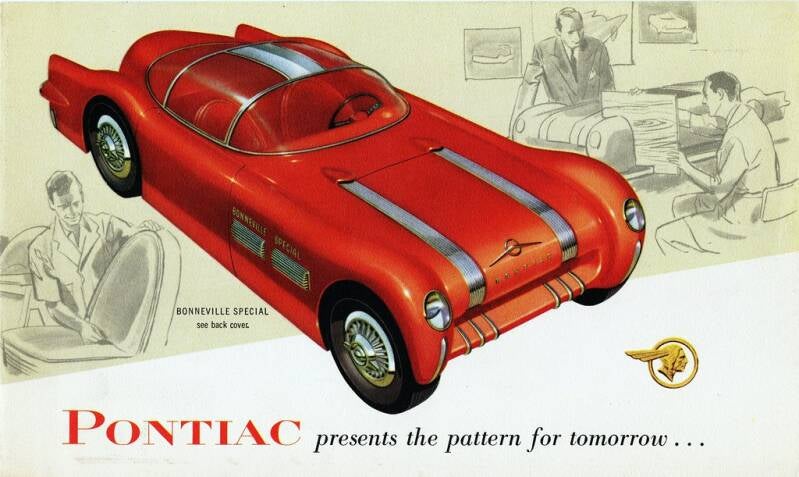

Pontiac was originally started in 1893 by Edward Murphy as the Pontiac Buggy Company. Murphy went into the automobile business in 1907 and formed the Oakland Motor Car Company.
Pontiac was a car brand that was owned, made, and sold by General Motors. Introduced as a companion make for GM's more expensive line of Oakland automobiles, Pontiac overtook Oakland in popularity and supplanted its parent brand entirely by 1933.


Headquarters: Pontiac, Detroit, Michigan, United States, 1926–1931

Headquarters: General Motors, Detroit, Michigan, United States, 1931–2010





bonneville

The Pontiac Bonneville is an automobile built from 1957 to 2005. Bonnevilles were full-sized, with the exception of a brief period of mid-size between 1982–1986. The brand was introduced as a limited production performance convertible during the 1957 model year. The Bonneville was among the largest Pontiacs ever built.
The name was taken from the Bonneville Salt Flats in Utah, the site of much early auto racing and most of the world's land speed record runs, which was named in turn after U.S. Army officer Benjamin Bonneville.

set of bonneville coupe and convertible Pontiac Bonneville Hard Top & Convertible (youtube.com)




gto

The Pontiac GTO is a front-engine, rear-drive, two-door, four or five passenger automobile manufactured and marketed by the Pontiac division of General Motors over four generations from 1963-1974 in the United States — with a fifth generation by GM's Australian subsidiary, Holden, for 2004-2006 model years.
The first generation of the GTO is credited as popularizing the muscle car market segment in the 1960s. The Pontiac GTO is considered by some to have started the trend with all four domestic automakers offering a variety of competing models.





firebird

The Pontiac Firebird is an American automobile that was built from 1967 to 2002. Designed as a pony car to compete with the Ford Mustang, it was introduced in 1967, simultaneous with GM's Chevrolet division platform-sharing Camaro. This also coincided with the release of the 1967 Mercury Cougar, Ford's upscale, platform-sharing version of the Mustang.
The name "Firebird" was also previously used by GM for the General Motors Firebird in the 1950s and early 1960s concept cars.










1926-1930
1930-1959
1959-2002
1981-2002
2002-2004
2004-2010









Create Your Own Website With JouwWeb